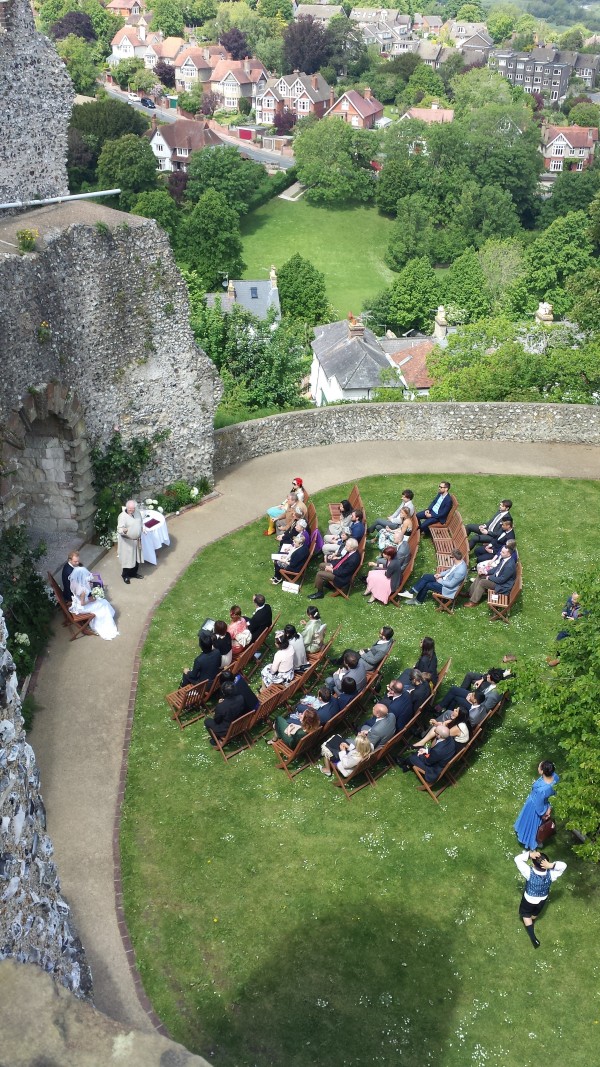
by Michael | May 10, 2016 | Blog
Celebrating a big event? A wedding, vow renewal or naming ceremony, perhaps? Did you realise that it doesn’t have to be conventional? Or even religious?
But can it be a quirky ceremony?
The answer to that last question is a resounding “yes”! If it’s your day (and surely it is), then you don’t have to be beholden to what other people think or expect.
That certainly doesn’t mean you should be tasteless or offensive – but you can be different. There is huge scope for creativity. It doesn’t take so much effort to come up with a memorable, meaningful and beautiful ceremony. And for all the help you will need, a civil celebrant can be there, with ideas and guidance. They are professionals and can really point you in the right direction.
So what do we mean by “quirky”?
The venue can be anywhere (subject to permission and possible payment!). Why not hold a ceremony at Stonehenge or some other ancient monument? What about the top of the Shard in London? Or perhaps a hot-air balloon fits the bill? A museum? Your back garden? Let your imagination soar!
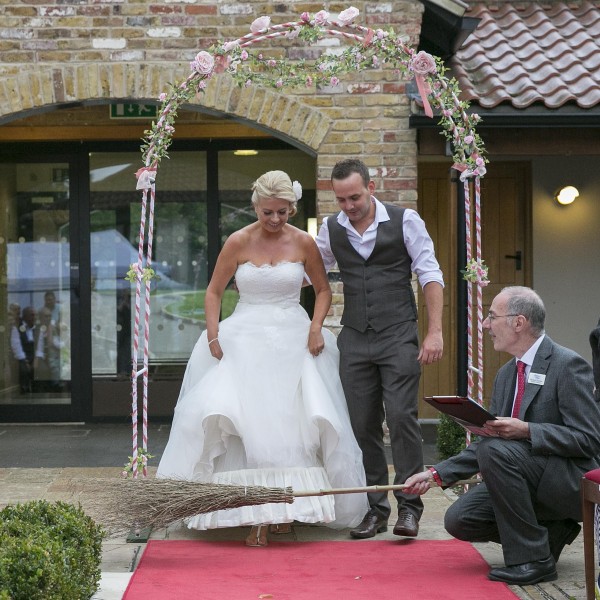
Rituals
Part of the ceremony can be something a little offbeat. You’ve probably read about handfastings in my blogs (eg https://vowsthatwow.co.uk/handfasting-whats-that/). That might appeal.
A ritual that brings a smile to a wedding is “Jumping the Broom”. The couple together jump over a besom (accompanied by appropriate words) to symbolise sweeping in the new.
The Unity Sand option is lovely. Both partners simultaneously pour sand in the colour of their individual choice into one larger bottle, so that the colours merge, just as their lives will.
Readings & Music
The content of the ceremony is ‘up for grabs’ too. The tone is up to you. There is no compulsion to include heavy, serious readings, if you don’t want them. Why not have a humorous poem or text, or even a few?
Choose your readers, if you want.
Similarly, while there’s absolutely nothing wrong with having a serious, classical piece played, your tastes may actually be rather different. So by all means let the music reflect these.
Your story, your vows
Personally, I welcome the opportunity to make ceremonies that I conduct as personal as possible. I believe the guests enjoy and appreciate this a lot too.
One feature I like to include, therefore, is what I call the couple’s “story”. In the case of a wedding, it might be how they met, adversity they had to overcome, and what attracted them to each other. The couple might write and declare their vows. For a Vow Renewal, maybe the couple would rewrite their vows, or prepare something about key moments in their relationship.
Although I’m always there to guide and advise, I think it’s best if the couple actually write this part themselves, if possible.
Funerals
It may surprise some readers to know that a funeral can be a quirky ceremony too!
In the same way as for celebratory occasions, you can introduce personal elements (often these would be personal to the deceased). At the time of writing, my latest funeral ended with everybody smiling and swaying, as we played out with the deceased’s favourite trad jazz band tune!
There are many ways to individualise a funeral. It can be a simple thing like a particular memento of the deceased displayed by the coffin. Again, your funeral celebrant will be glad to advise.
So I hope you now see that there’s nothing wrong with individualising your ceremonies – indeed, this can often add a tremendous amount to the proceedings.
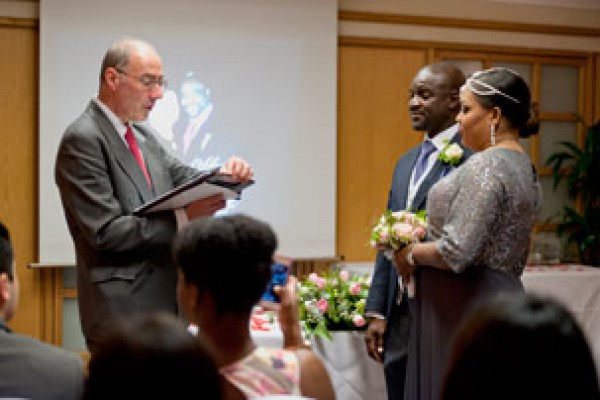
by Michael | May 5, 2016 | Blog
You may never even have considered renewing your vows, but one of the beauties of such a ceremony (as opposed to a wedding, say) is that you have real choice.
Depending on your budget, you can hold a vast, lavish affair for a hundred or more in a plush hotel. Alternatively, you might prefer a modest ceremony in your back garden for close family and friends.
A wedding may require a church service or a registrar ceremony; the planning (ceremony and reception) may involve family; you may have to organise any or all of: venues, catering, flowers, photographers, evening entertainment – all the trimmings.
For a Vow Renewal, you invite who you want, and prepare the ceremony that you want, at the place that you want. (This may be with the help of a civil celebrant, but not necessarily.) The size and scope will be down to you.
To give you some idea of what you can have, I’d like to look at three Vow Renewals that I recently played a part in.
Three Differing Examples

A London hotel
One was fairly conventional (and that’s in no way a criticism!). It took place in a lovely Mayfair hotel, the Washington, before a couple of dozen guests. The room was opulent, but not overstated; there was a slide-show in the background, and the ceremony featured a moving, piece of music sung by a wonderful soprano.
The attention to detail by the staff was excellent, and we enjoyed a reception in the same room after the service. Though quite formal, it was a real feel-good affair.
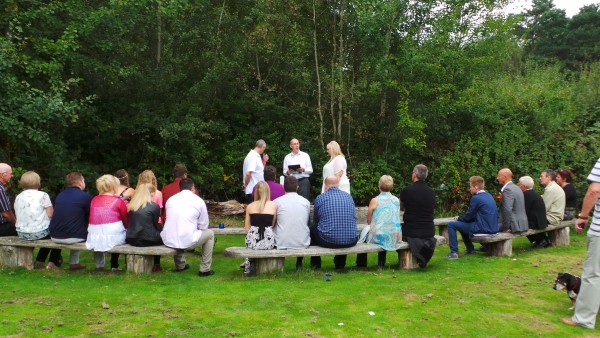
Messing About on the … Canal
Another couple were mad about barges, so Basingstoke Canal Centre made perfect sense for their venue.
The hire costs were negligible, as we used a secluded area in a wood with a tree trunk as a table, and benches made from trees, so the atmosphere was lovely. Dress was informal. The only expense (apart from refreshments, which the couple brought with them) was to hire a yurt for the reception (and for the ceremony, in case of rain). Again, we were only a couple of dozen chosen people.
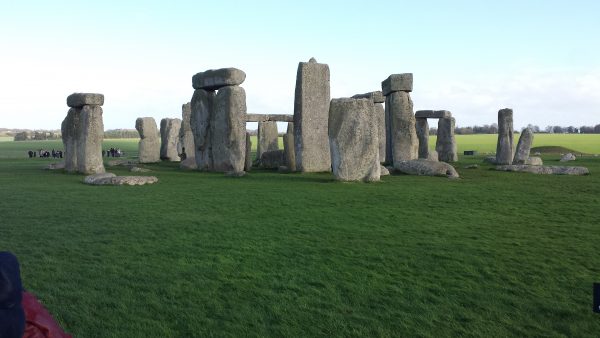
Stonehenge
Finally, how about a handfasting ceremony at Stonehenge? How atmospheric is that?
Actually, the atmosphere was different to what we expected, as it was Midsummer Day, and, uniquely, the site was free to visit. There was no chance to book the inner circle, so we shared the occasion with the public. In fact, we were actually part of quite a crowd – even though our party consisted only of the couple, a photographer, and myself. (Not to mention, Druids.)
A very special event indeed.
Other ideas
As a Londoner, I could suggest venues like the Shangri-la Hotel, up the Shard, or The Ritz or Savoy. At the other end of the scale – and be aware that you need permission – you could hold your ceremony on a bridge over the Thames or in Green Park.
What about booking the London Aquarium or the nearby London Eye?
Just the tip of the iceberg.
So be imaginative and relish a once-in-a-lifetime celebration!
Contact Michael for help, advice and guidance.

by Michael | May 3, 2016 | Blog
It can be a major mistake to overlook the opportunity to celebrate a Vow Renewal.
Some people assume that it’s simply an excuse to blow a load of money. Others don’t see the point: so what, if it’s my tenth (or whatever) year of marriage?
But you could really be missing out on something special.
Something special
What if you could come away from your Vow Renewal feeling the same as this couple?
“Thank you being our celebrant and putting together our vow renewal, the words felt very personal to us which made it quite an emotionally fuelled ceremony that just flowed but embraced everything we wanted with the readings, blessings of our rings, lighting of our unity candles and finally the signing of our certificate. Our friends and family all commented on how we always do things a bit different and this ceremony and celebration exceeded that. Thank you x”
[C & D – Genuine testimonial]
So what is a Vow renewal?
Essentially, it is an opportunity to reaffirm publicly your marital relationship. You may want to mark a special milestone year – or a new time in your marriage (following ill health, financial difficulties or even a rocky relationship).
Unlike your wedding, there are no legalities to worry about. The ceremony can be as lavish or modest as you choose. It can take place in a back garden, beside a canal, in a hotel or at the top of the Shard. You choose.

How is the occasion marked?
There is no prescribed ceremony, so if you want a religious or part-religious service, that’s fine. Secular is also fine! You want to dress up formally? Fine too! Or come casually? Why not?
How about including friends and/or relatives in the ceremony? Maybe you’ve got children and you want to involve them? You could include the lovely Unity Candle ritual. You might consider a handfasting.
You may want to have your rings blessed or recite your vows (your marriage ones, or a new set, if things have changed). You may want to play your favourite band’s music. The choice is huge.
How you mark the occasion is absolutely up to you (though your celebrant will gladly guide and inspire you!).
How to arrange it?
This is likely to be a much more informal affair than a wedding. You may or may not offer a reception. It might be a buffet. You can hold it at a place that means something special to the two of you.
You will probably only need to do the following tasks as a minimum:
- Book a venue (unless you’re using your back garden, say)
- Organise the reception (according to the scale you are envisaging)
- Book your civil celebrant
- Send out invitations
So you can have the people you love and choose around you, as you celebrate your special occasion in the way that you want and dream of.
Isn’t that worth considering?
Michael would be delighted to give you more information or help you arrange your ceremony. Just contact him for a non-obligation chat.
by Michael | Apr 26, 2016 | Blog
We all know that your wedding day is supposed to be a happy day – indeed, the happiest of days. But what if things go wrong? What if you make a fool of yourself? What if something gets forgotten? Few people avoid wedding day stress.
One key step
You can make it far more bearable with good preparation. If you have organised things well in advance (or maybe you have employed a wedding planner to do this), then you should be able to enjoy the day without worrying about last-minute details.
Just to depress you, I’d like to point out that, of course, almost anything CAN go wrong. Your car may not collect you on time, it may break down, tremendous traffic – or weather – may hold you up. The venue may have a power cut.
And that’s merely the beginning of the list!
Attitude
You can fear the worst – or anticipate the best. Rather than become totally paranoid, accept that there are certain things you cannot legislate for – but that are highly unlikely to happen. You can spoil the whole day by worrying about something that just isn’t going to happen.
Preparation
That’s not to say that you should be casual or negligent. You are most likely to be safest, if you employ good professionals – whether caterers, celebrants, florists, photographers, event planners or others.
If you have to deliver a speech, there are things you can do to prevent this from becoming a ghastly experience. I really can’t do better than refer you to a couple of blogs I have written on this subject.
Checking
It’s worth checking with your suppliers a day or two in advance that everything you have stipulated is in hand and that they know when and where they are expected.
The venue should have a planner who will cover this, but if you have the chance to arrive early, make a visual check of the room(s) . Can you spot anything potentially dangerous, like trailing wires? Is anything missing? Is there enough of whatever you will need?
On the day
It is natural and almost goes without saying that you will be nervous. Whether bride, groom, parent, best man etc., you will have at least a moment in the spotlight as centre of attention. Chances are, you are unused to the limelight.
A bit of adrenalin won’t harm you. And you do know that everybody will be on your side, willing you on.
A good strategy
Best to practise this well in advance, and on the day this will be a great calming exercise: take a few moments out to sit and concentrate on your breathing. Aim to slow it down, but don’t breathe too deeply – after all, it’s not a great idea to pass out!
A less good strategy
Alcohol is the answer to all problems. Well, no, it isn’t, although, for some, a small amount may settle a few nerves. Getting drunk (“to forget”) is a big mistake and may increase stress (often for other people!).
Phobia
If, despite my suggestions, you fear that it will all prove too much for you, then I recommend EFT (or “tapping”), which can be remarkably effective in dealing with extreme cases. Isobel has many years of experience in helping to create confidence in any situation. Reach her at www.intherighthands.co.uk.
If you simply want a bit of reassurance and guidance, then please contact me. I take pride in putting people at their ease on their big day.
by Michael | Apr 26, 2016 | Blog
If you are not pagan, you may be blissfully unaware that Beltane will soon be upon us. It is usually celebrated on 30th April/1st May and is one of four seasonal Gaelic festivals that occur each year.
For the Celtic people, Beltane marked the beginning of summer. Cattle would be driven out into the summer pastures, and rituals performed to protect the cattle, as well as the crops and people, and to ensure growth.
Rituals
Beltane is known for its bonfires. Flames, smoke and ashes from these bonfires were considered to have protective powers. The herdsmen and their cattle would walk around the bonfire (or between them, if there were two). They might even leap over the flames or embers.
When the fire had died down, people would daub themselves with its ashes and sprinkle them over their crops and livestock.
Household fires would be extinguished and re-lit from the Beltane bonfire. There would be feasting and offerings to the gods (or, more precisely, a supernatural race akin to fairies).
Cattle and their cattle-sheds would be decorated with yellow May flowers (this possibly evoked fire).
It was also believed that at around this time pagan gods and nature spirits were at their most active, and many of the Beltane rituals were designed to appease them.
According to some, the fire rituals were meant to mimic the Sun and ensure a supply of sunshine for men, animals and plants. Others believed that they symbolised burning up and destroying all harmful influences.
Revival
About 60 years ago, Beltane celebrations had more or less died out; however, there has been a revival in recent times, notably thanks to Celtic neo-pagans and Wiccans. It is also celebrated in the Southern hemisphere (although around 1st November).
If you are interested in pagan/Celtic elements as part of a ceremony that you are planning – be it wedding, anniversary, special birthday or vow renewal – , then please contact me, your independent civil celebrant, and we can put together a wonderful handfasting ceremony.
Featured image source: telegraph.co.uk

by Michael | Apr 20, 2016 | Blog
It’s Spring, so the Summer Solstice is approaching. It’s a fantastic time to consider a solstice handfasting.
“A what?” I hear some of you say. “That does sound ‘unusual’!”
Allow me to elaborate.
If you don’t know, I am assuming that you are not a Druid or pagan, and if you are, please understand that I am writing this for the uninitiated. There are, however, different kinds of handfastings, so there’s no single answer to the question.
Example of a handfasting
Remember when Kate and Prince William got married about five years ago? Although it was a religious C of E ceremony, there was an element of handfasting in there when the couple took each other’s hands, which were covered by a ribbon.
It was a lovely simple ritual.
Now if you take that one step further and bind the two hands together, you have a handfasting.
Incidentally, this gives rise to the expression “tying the knot” and also “bonds of holy matrimony”.
Origins
This ceremony probably originated in Celtic times; however, it flourished in Europe until the mid 1700s. Up till then, few unions were sanctified in a religious building like a church. Rather, they were celebrated by a simple handfasting ceremony in which the two partners joined hands over the village anvil, in the fields or in the groves of trees. Today, we build upon this tradition.
The basics
The couple link and cross hands (normally right hand to right, and left to left) to form an infinity circle, symbolising the entirety of the universe as represented in their relationship. Then, with a cord or ribbon (or ribbons), the wrists are tied and knotted, in a lovers’ knot, to the accompaniment of a suitable text, to symbolise the joining together of the two people in lives and spirits.
The cords are then removed, normally by the couple – occasionally, with difficulty! – with the knots still in place. They will take the cord away with them and, ideally, it will remind them of their vows, should they hit a rocky patch.
Where does this happen?
Again, it depends, but many people prefer a quiet, open-air historic site that may be considered to be spiritual and preferably pagan – such as standing stones.
What about Stonehenge?
A civil celebrant, such as myself, can conduct a handfasting wedding or vow renewal in the Inner Circle at Stonehenge (normally around dawn or dusk), but this needs to be booked months in advance (and the Druids will have priority at the solstice). However, places like Avebury, Old Sarum or the Rollright Stones are wonderful and might serve the purpose every bit as well.
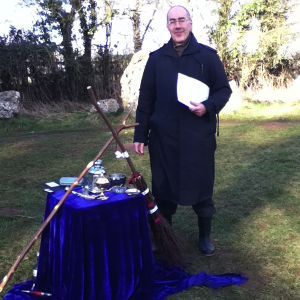
Michael raring to go at the Rollright Stones
I’m booked for a Stonehenge handfasting this June, but do have a chat (07931 538487) and see if we can sort something very special out for you for another time!






